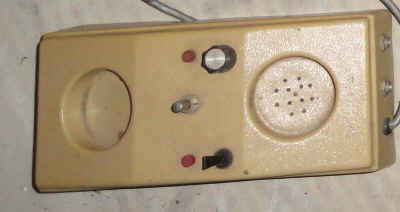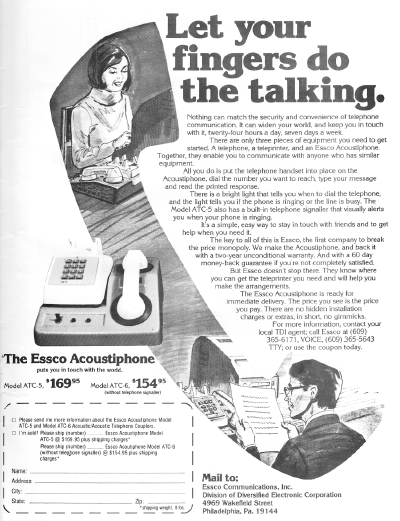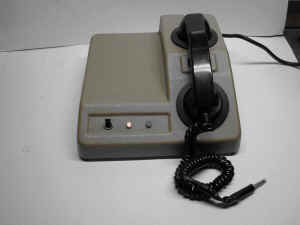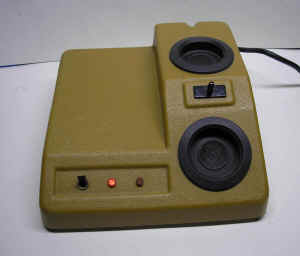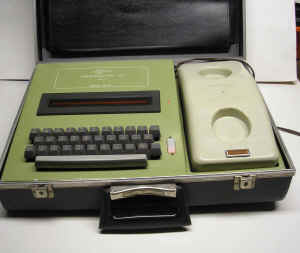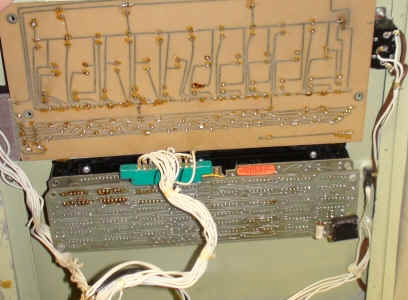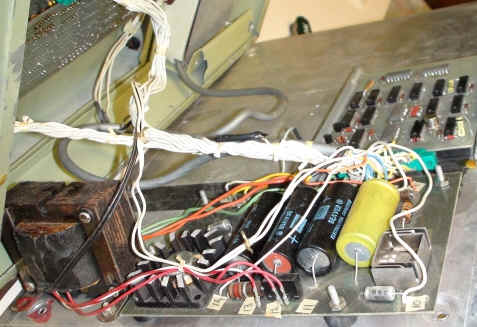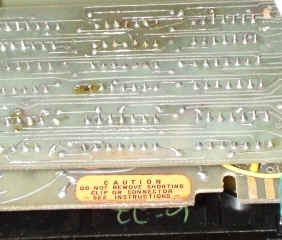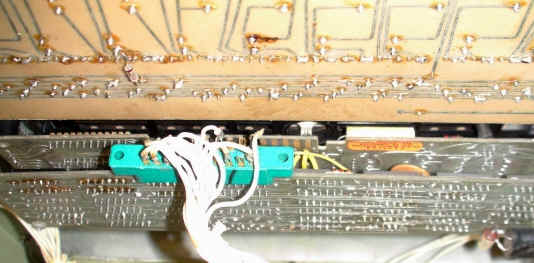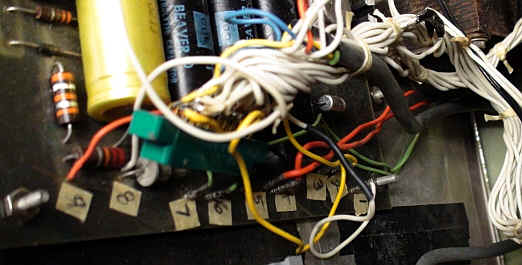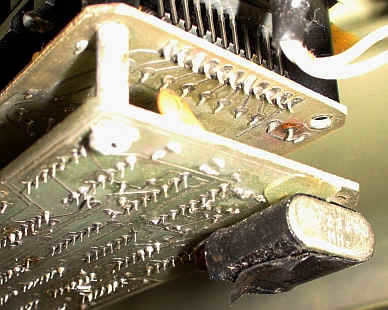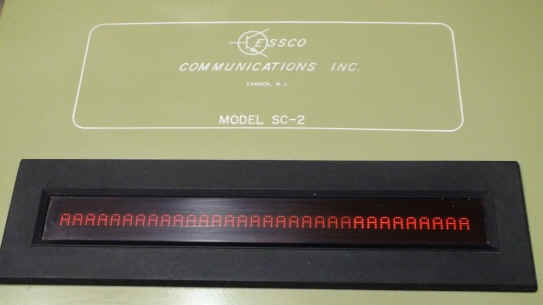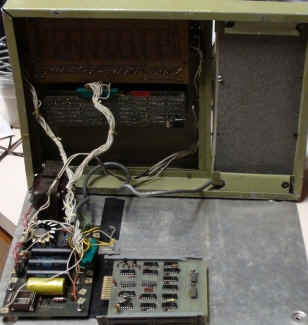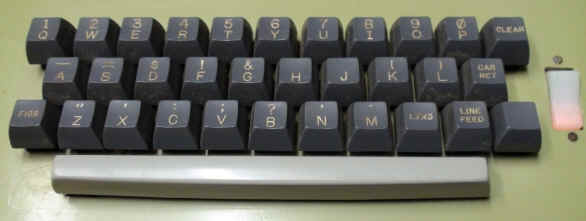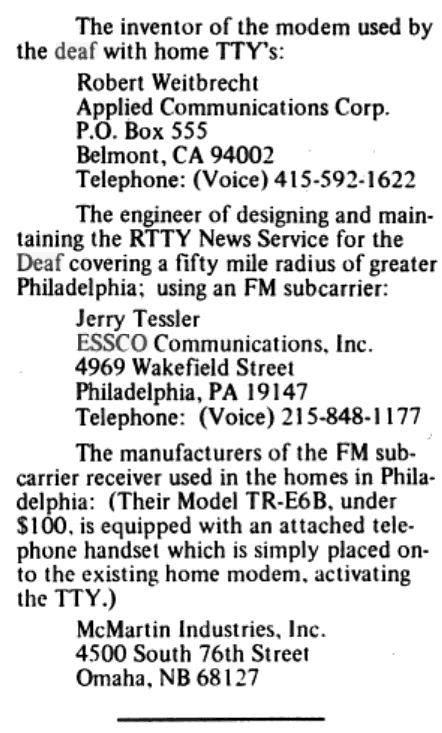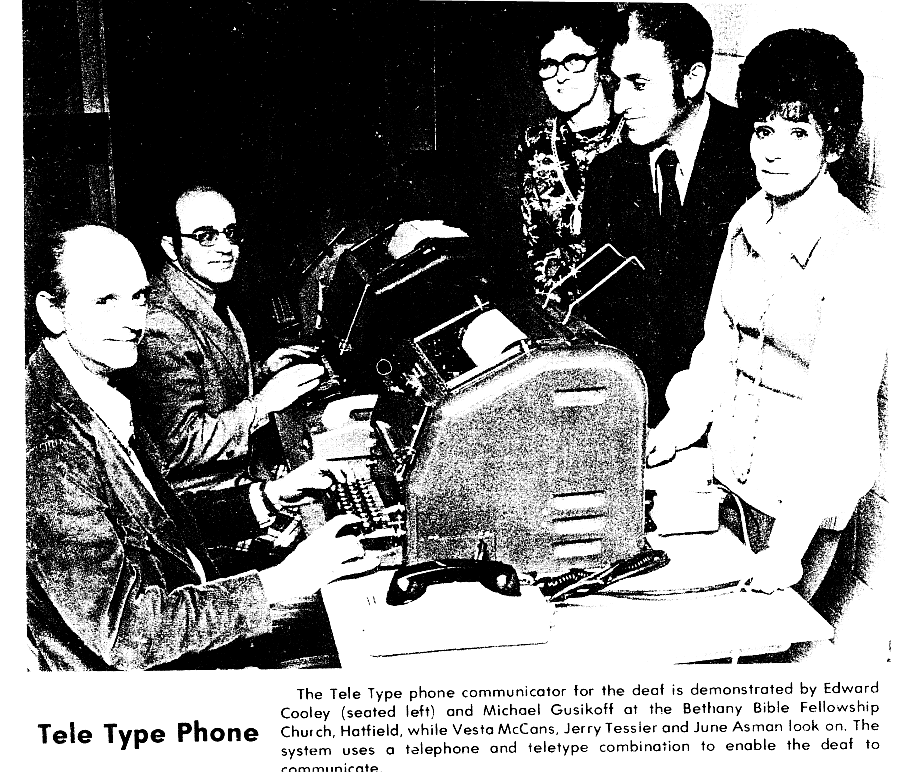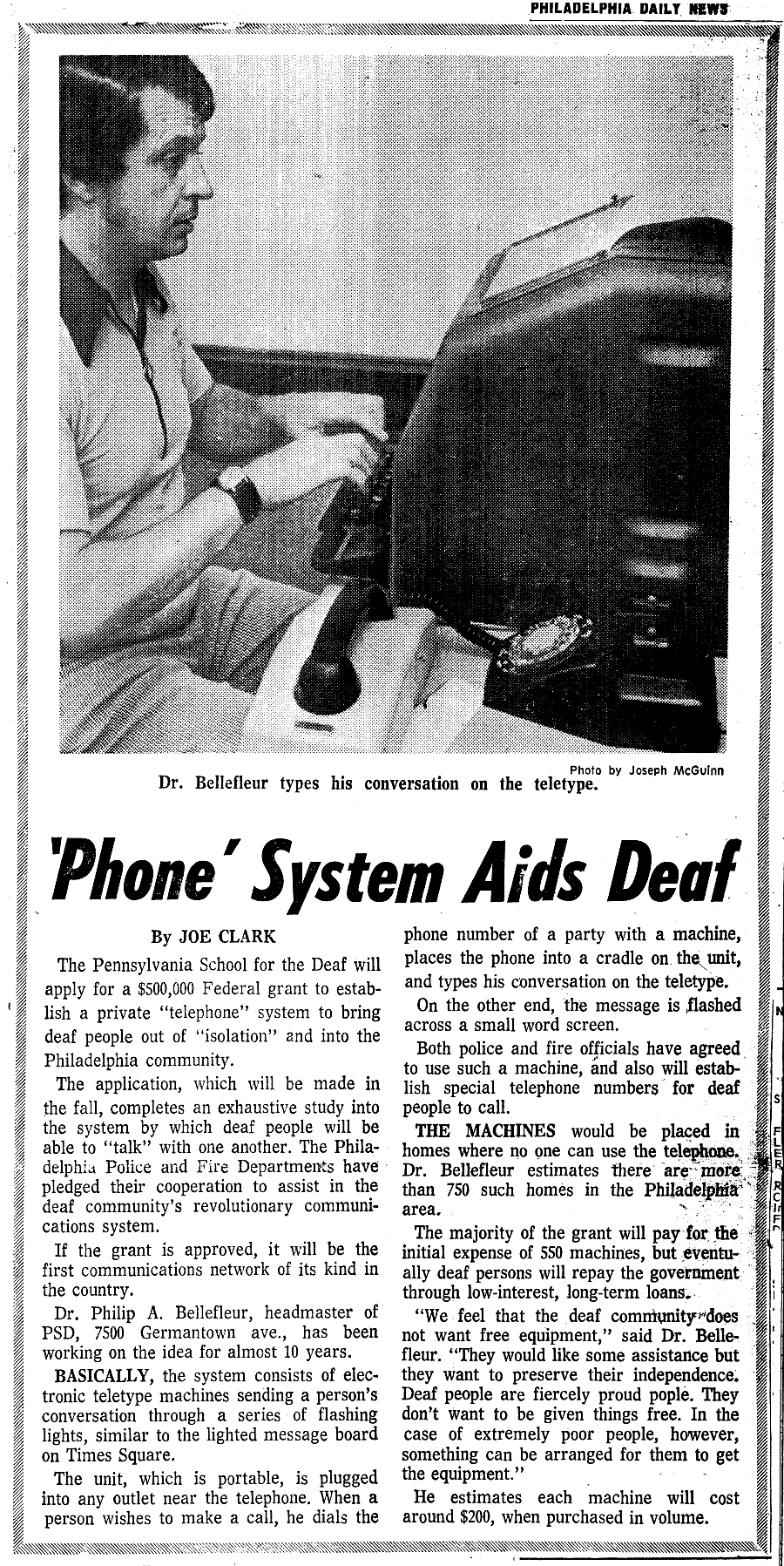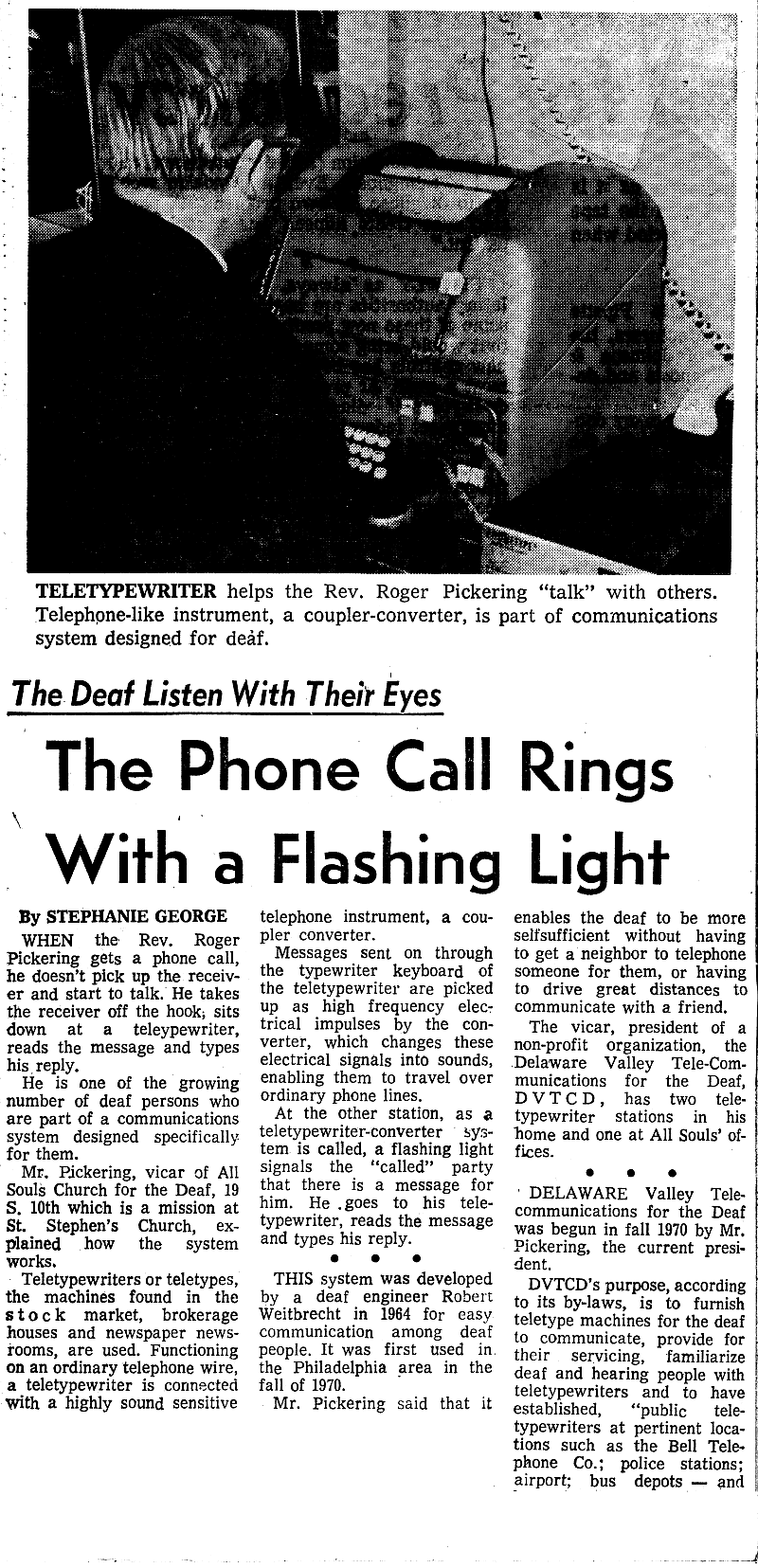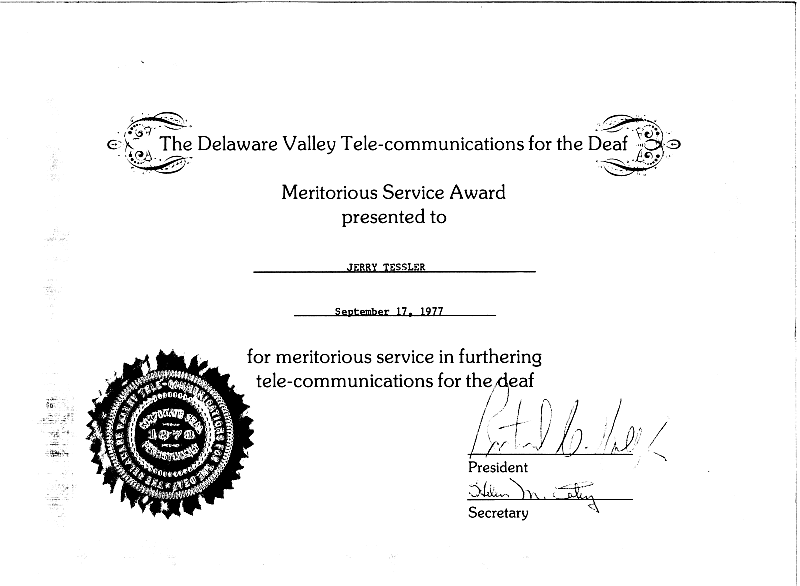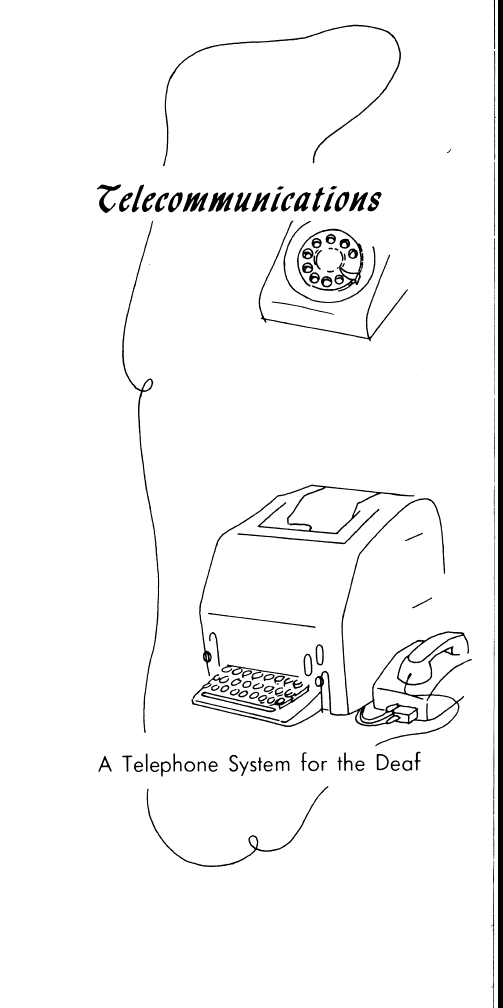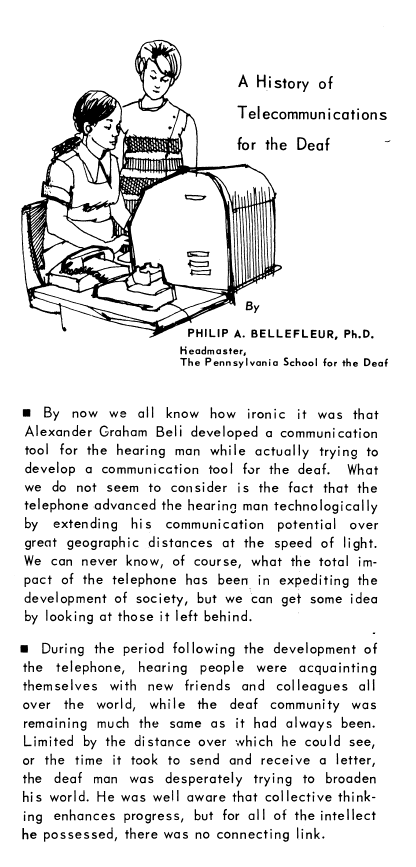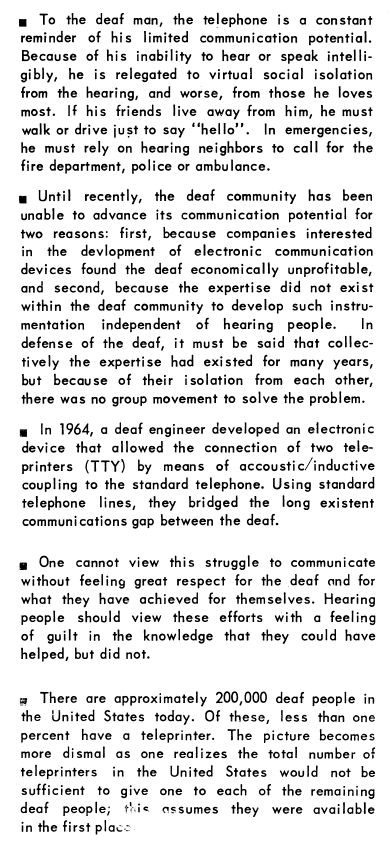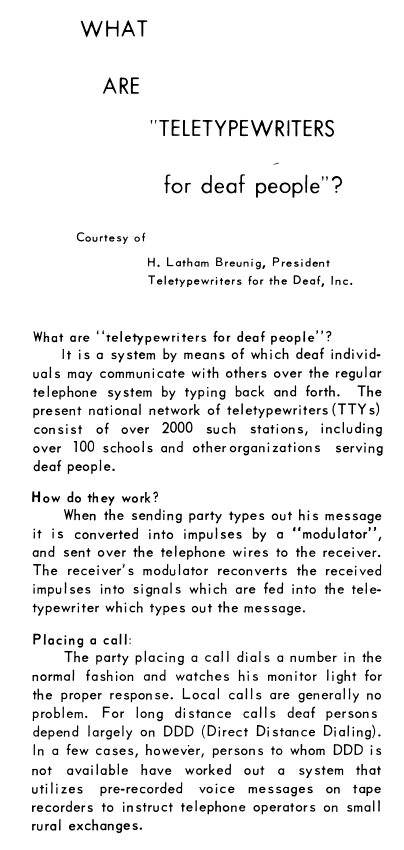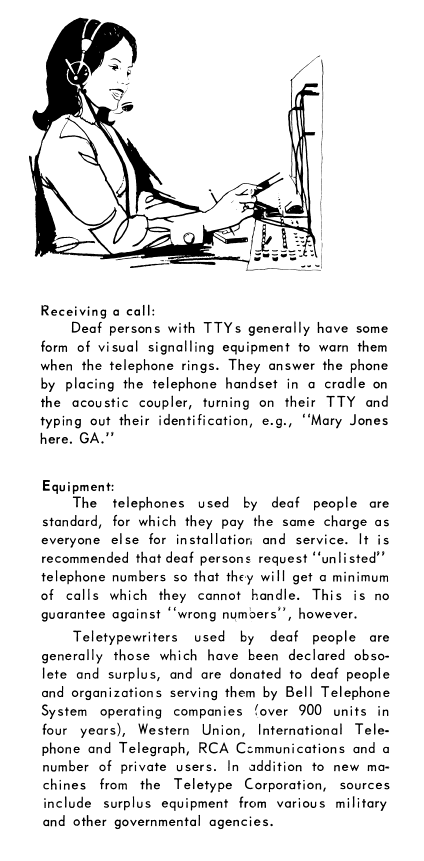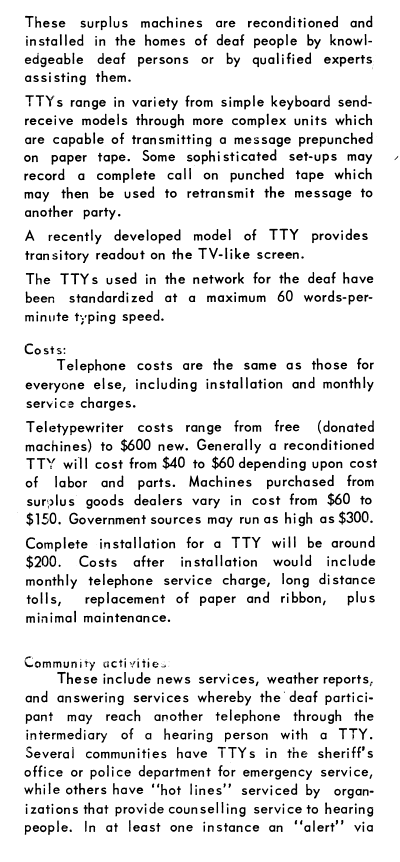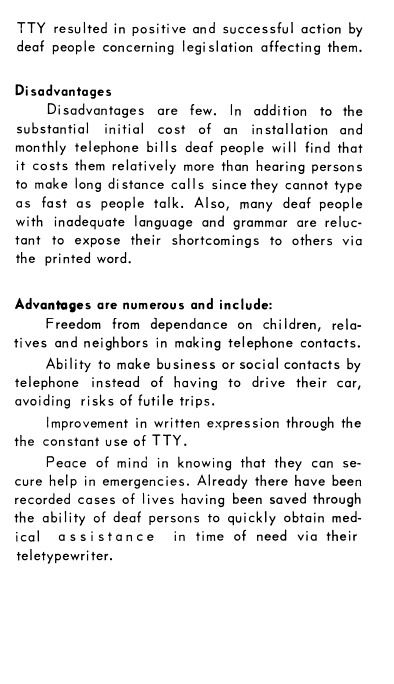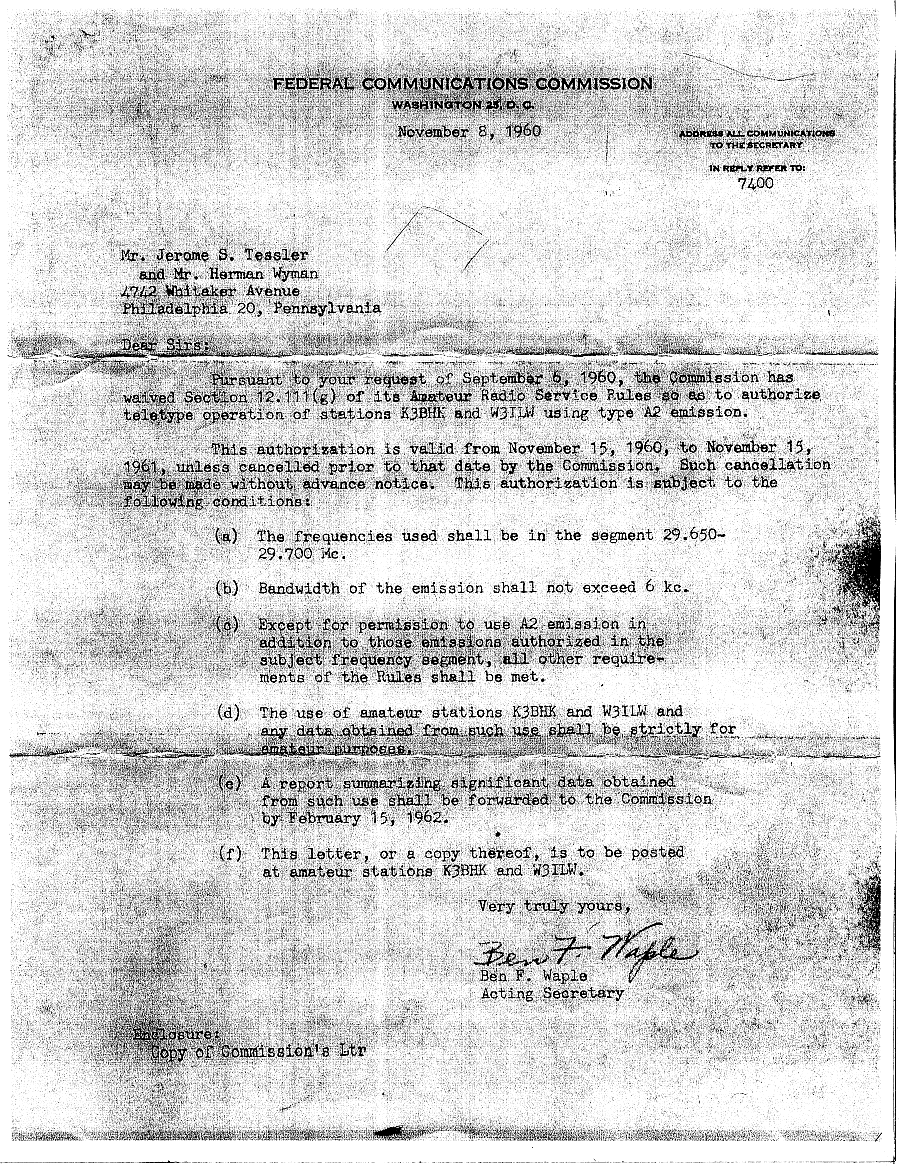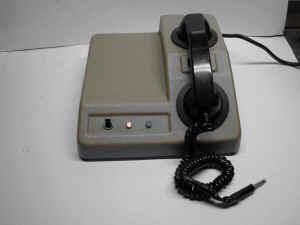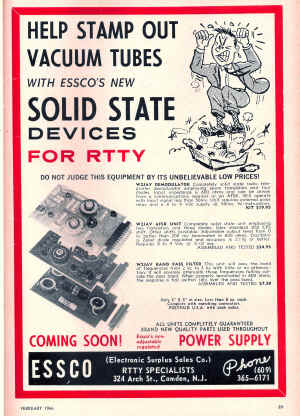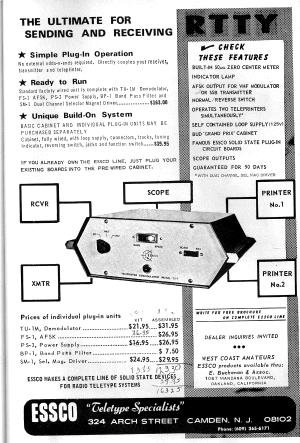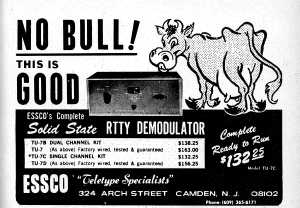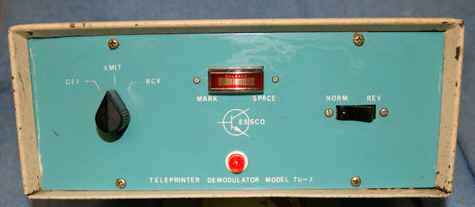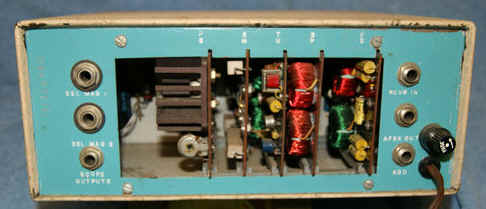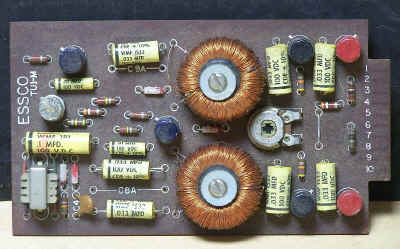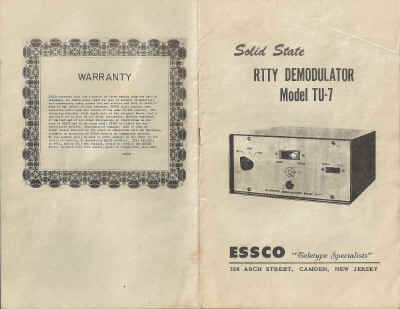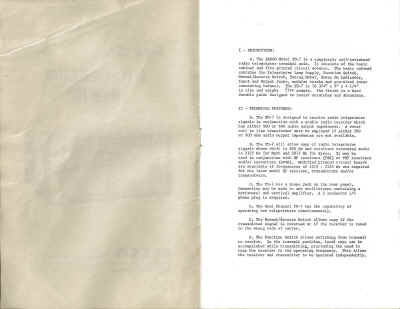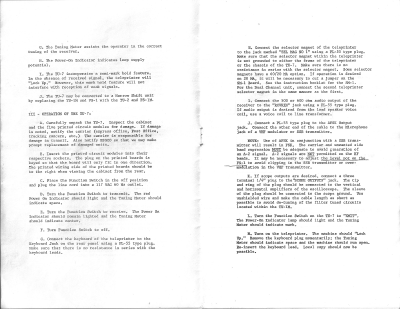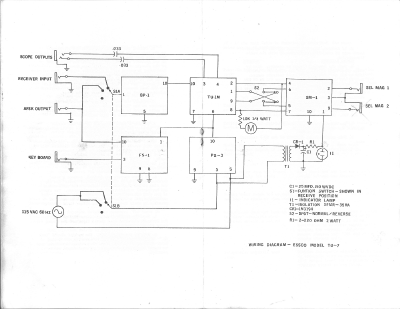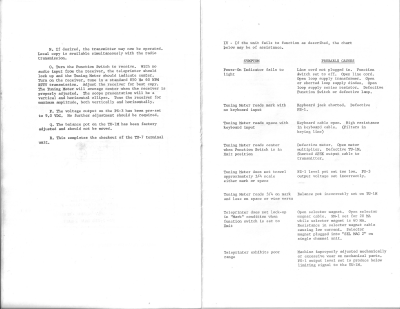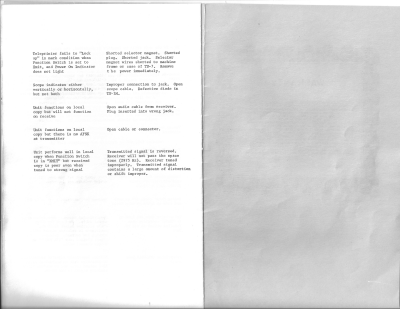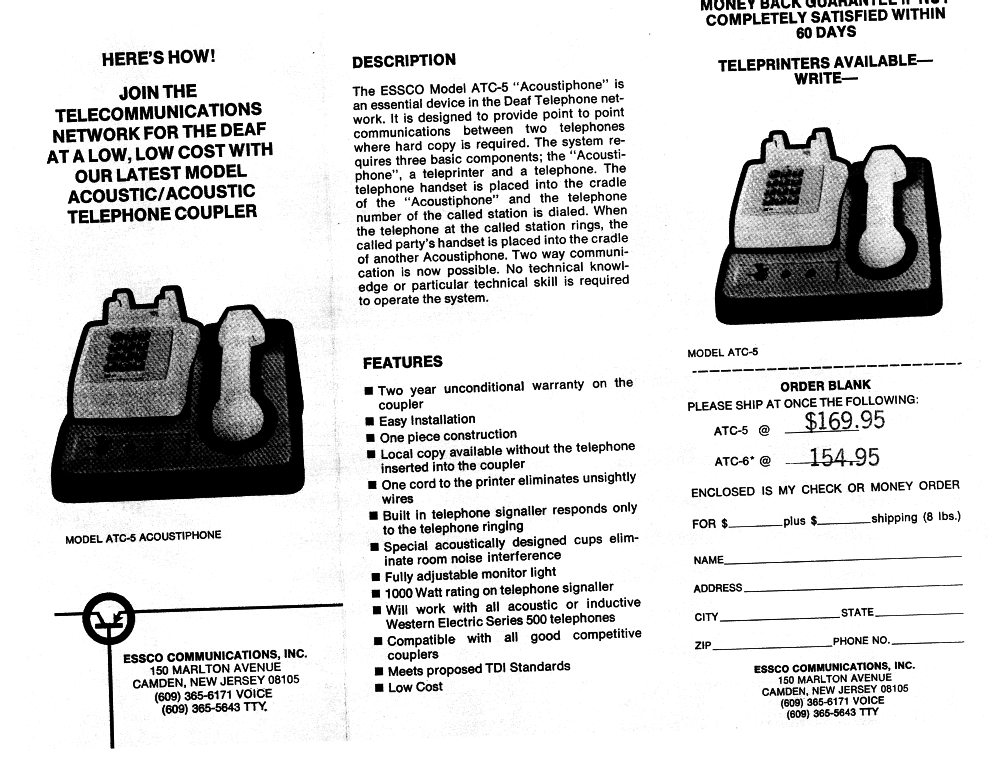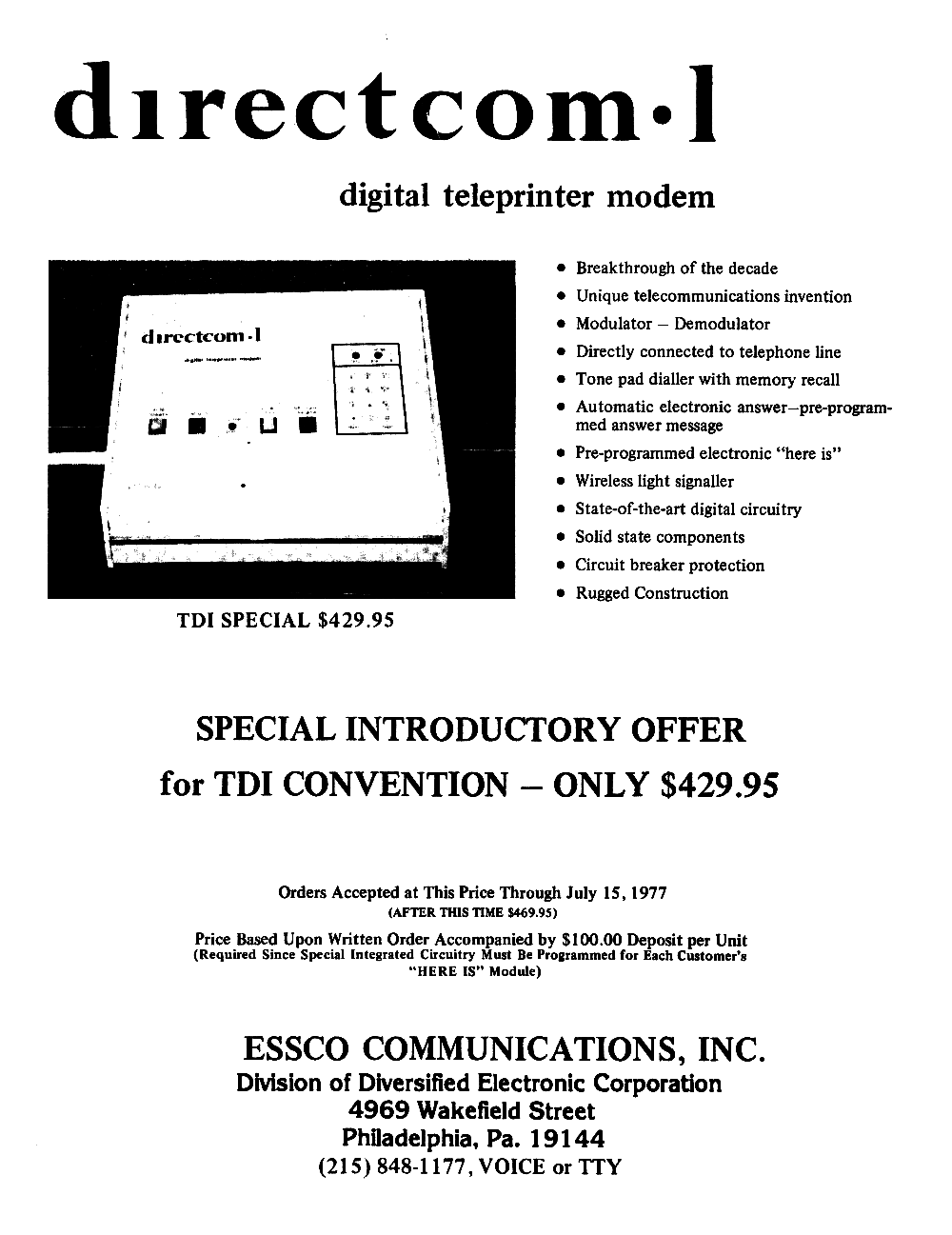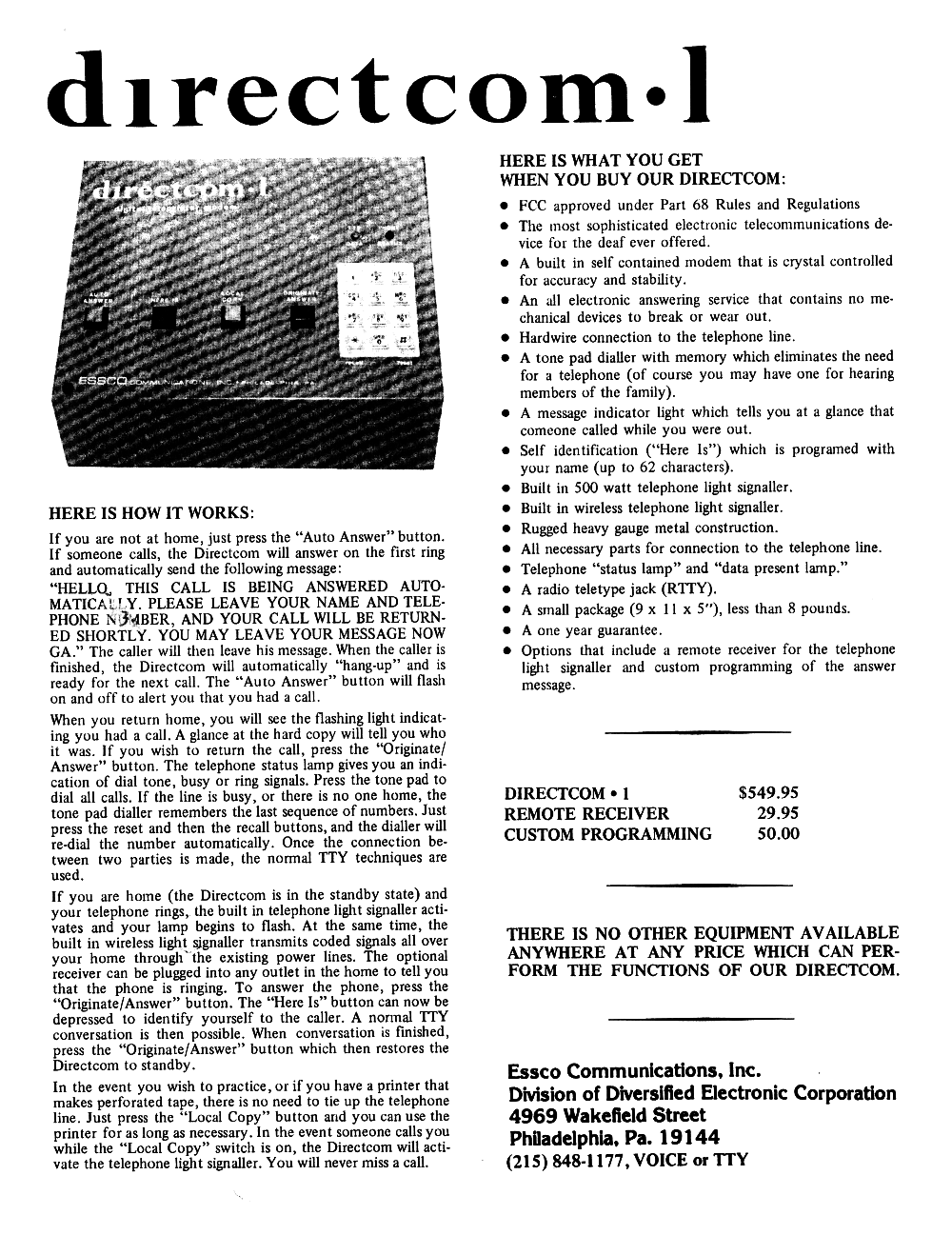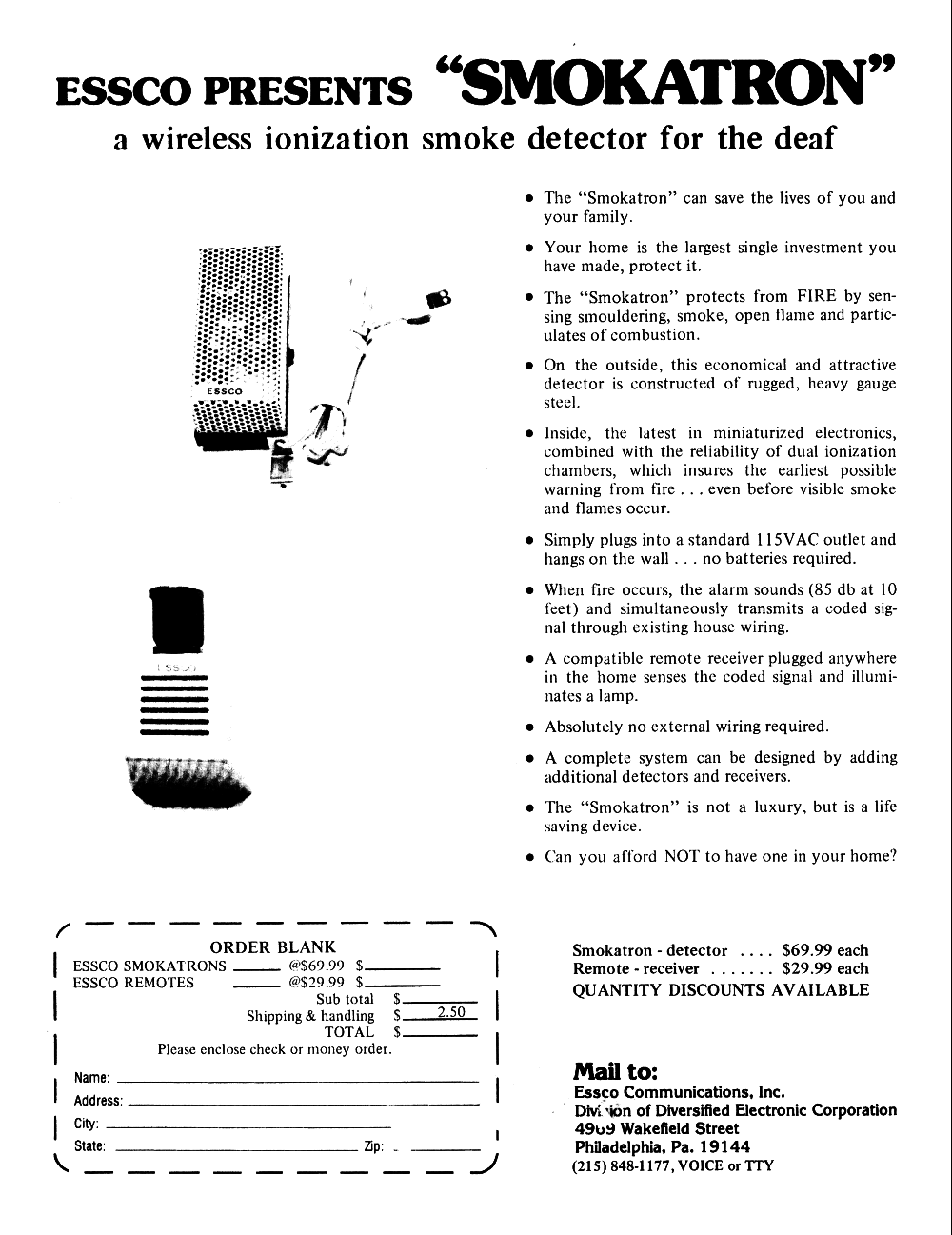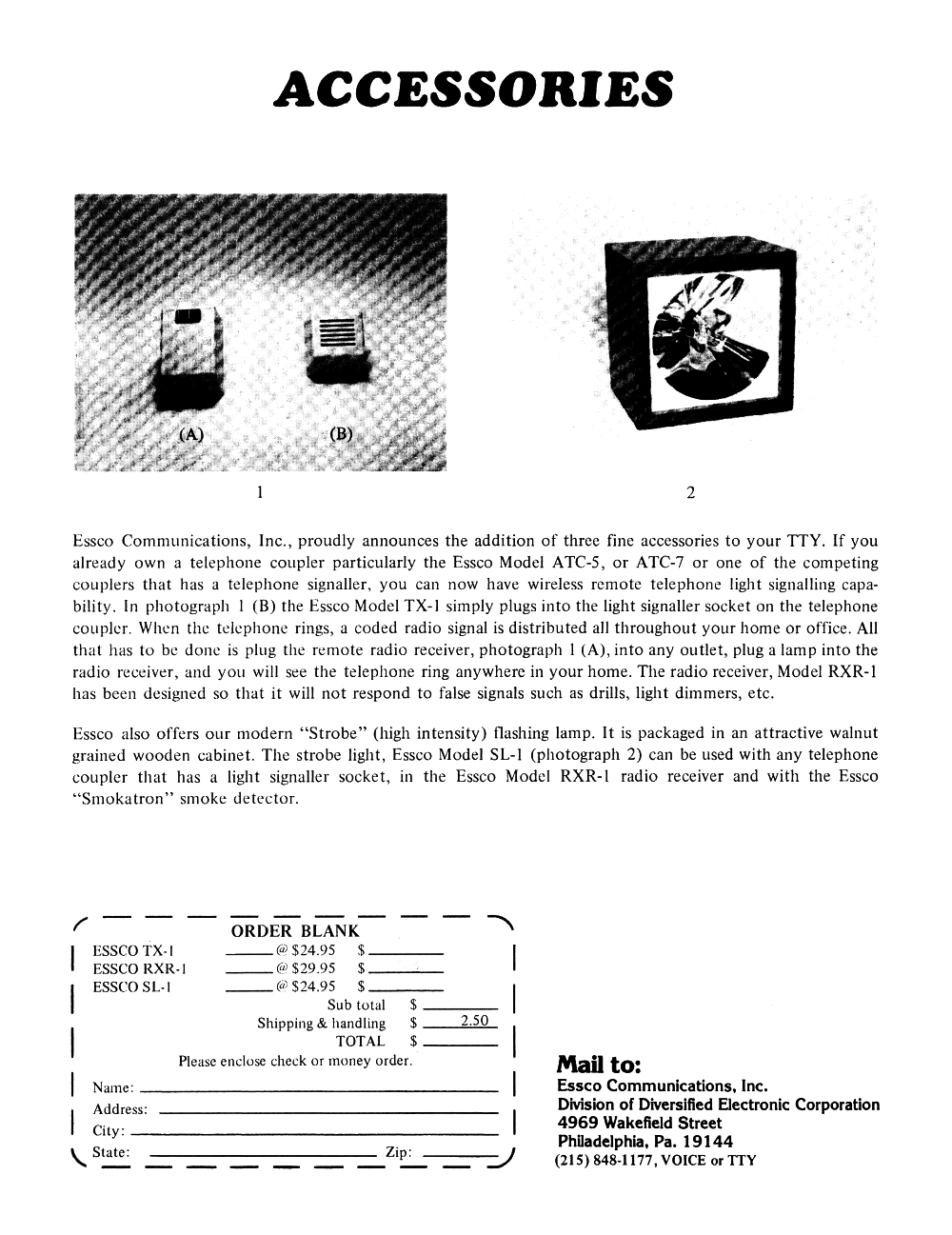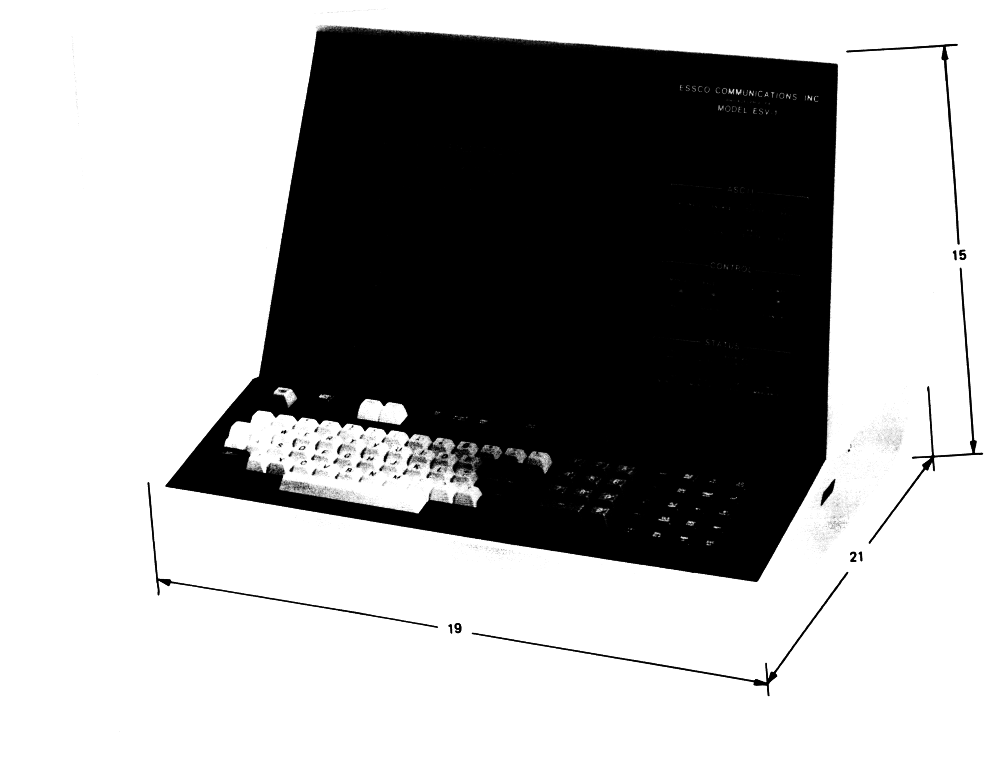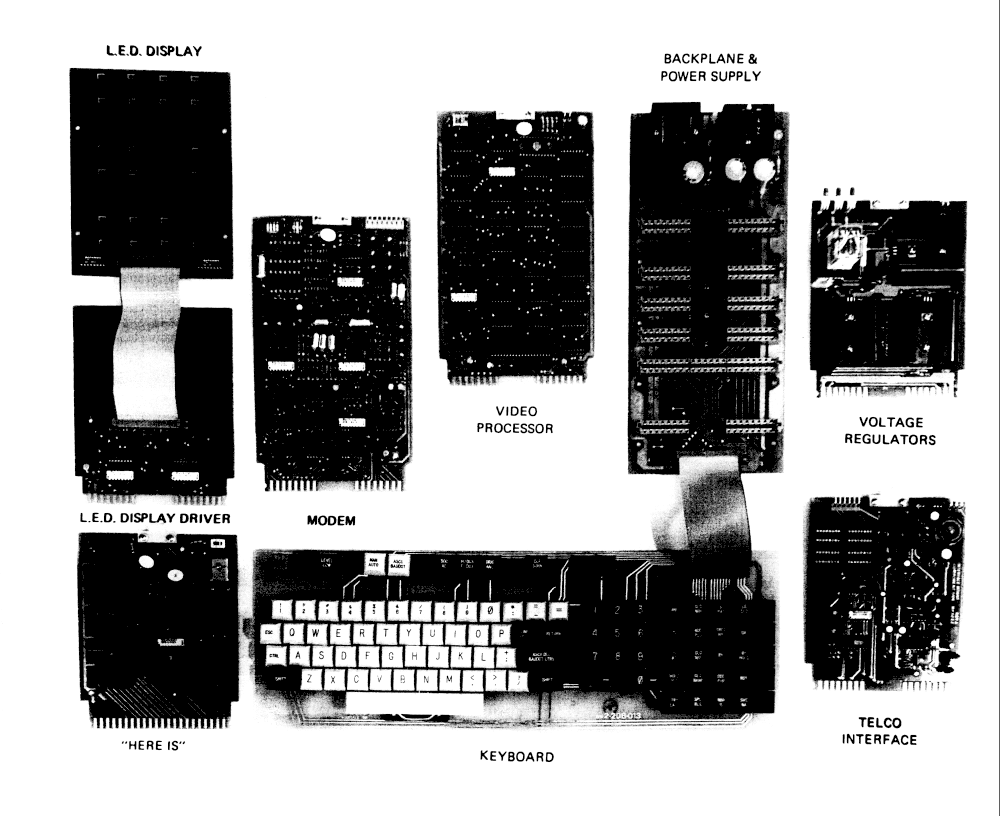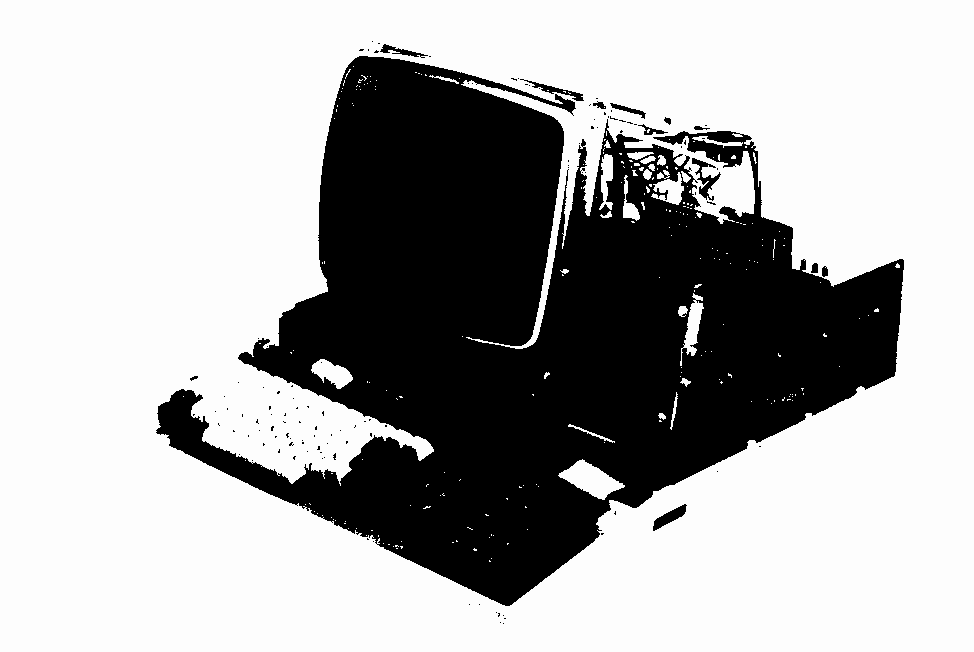History
of ESSCO
By
Jerome
S. Tessler
Founder of ESSCO - C- 2013 - SMECC
FOREWORD
After
my discharge from the USAF in September 1956, (I left three
months early to attend Penn State University) and unfortunately,
when I arrived to register, I was told that all the classes I
needed were full and I would have to wait until the next
semester. I was afraid that the service would recall me and I would
have to complete the three months.
So, I found a two year technical school (Philadelphia
Wireless Technical Institute) that specialized in radio &
broadcast engineering. I wound up with a First Class Radiotelephone license and a
General Class amateur license (K3BHK) plus a good understanding
of RADAR & aircraft communications.
I missed an opportunity to work for WCAU-TV, but the
chief engineer (who was an alumnus) had a heart attack and died
prior to getting all the paperwork done.
So, I took the alternative route and took a job with RCA
in Camden, NJ.
I
started there in September of 1958 and loved every minute.
I worked on projects that took the USAF, (SAC in
particular) into the 20th century with the
installation of the ARC-65.
This was a high power single sideband transceiver which
replaced the earlier AM transceiver units.
When the government projects were through, RCA in their
inimitable fashion laid off people by the thousands and
unfortunately, I was one of them. I was offered a position with a Florida based company
(Electro Mechanical Research) who had subcontracted a NASA
project (Gemini) to RCA. I
went back to work at RCA with a customer hat on.
RCA
had a retail outlet store from which you could buy television
sets, washing machines, refrigerators, phonograph records, et
al. Included was
manufacturing excess and test equipment.
I noticed five high powered UHF transmitting tubes and
bought them for $5 each. I
contacted a company in NYC (Barry Radio) that specialized in
transmitting tubes and they bought them instantly.
I packed them carefully (I thought) and they arrived in a
million pieces, and my only salvation was that I insured them
with the common carrier. The
insurance settlement was enough to give me the financial muscle
to start my own company.
In
the late fifties and early sixties, the amateur radio operators
and some electronic experimenters were anxious to acquire the
glut of military surplus equipment that was available.
I spent many weekends at “radio row” in NYC as well
as the equivalent on Arch Street in Philadelphia buying all
sorts of communications equipment and components.
It wasn’t very long that I had a basement full of
“goodies.” My
wife on the other hand, thought it was all junk and couldn’t
understand the rational. So,
with an order to “get rid of the junk” I started to look for
an inexpensive store front in the City of Camden.
I found a dilapidated store at 324 Arch Street for a
reasonable price, and rented it.
I called the new business “Electronic Surplus Sales”.
The information below may not be in chronological order and the
dates may not be exact.
THE
BEGINNING AND KEY PLAYERS:
The
building was in bad shape and required a large amount of
renovations to make it habitable. A fellow employee at RCA (who was still there) and an ardent
ham, asked me if he could be part of the company.
His name was Jay B. Shaw (K2BZK) who was an electronics
wizard as well as an outstanding carpenter, plumber and general
handy man. Between
the two of us, we made the place look good and I moved all the
“stuff” from my basement to the store.
The building had two floors, the first floor was used for
surplus sales and the second floor we made into a shop and
laboratory. This
was to be used to get some of the surplus equipment in working
order.
Our
store was open in the evening hours and on Saturdays.
At first, business was brisk.
Our customers were RCA people, ham radio operators and
experimenters. The
biggest complaint we had was that the inventory was meager and
not too appealing. I
found a company called Bysel who bought and sold (as their name
implied) all sorts of military hardware.
They had electronics, components and even machine shop
equipment. We
bought a great deal of equipment from them and we quickly
discovered that we also could bid on government surplus.
We were successful about 10% of the time and since Jay
was a pilot, we flew to various government institutions to look
at the stuff we were bidding on.
In one case, we bought a lot of teleprinters from a Naval
Air station in southern Virginia, and sold them in a few days.
It struck me as this was a new market for us.
As
the Japanese manufacturers began to make Amateur Radio
equipment, the market for surplus items began to dry up, but the
teleprinter market was selling.
The RTTY enthusiasts had to build their own “terminal
units” and at the time, all were vacuum tube types.
Many hams had no facilities to do sheet metal work (holes
for tube sockets and bending for the chassis).
I had a Teletype Model 15 since 1958 and I built the tube
type terminal unit. I got the teleprinter from Phil Catona, W2JAV (now deceased)
who was a pioneer in RTTY.
His circuit was published in QST for all hams, but it was
tubes. In most cases the tubes had to be matched for gain and it
took a lot of tubes to do this.
So,
I mentioned to Jay that it would be a good time to build a solid
state version of Phil’s terminal unit.
Phil had no objection other than he wanted some
recognition for his earlier work.
In a few weeks Jay had a working solid state demodulator.
The size was approximately 3 x 5 inches.
It required 5VDC @ low current, and the results were
outstanding. There
were a few technical difficulties, one being that most
teleprinters (of the Teletype ilk) had a polar relay. It was
large, about two inches in diameter and 4 inches tall.
The relay itself was special, it was similar to a single
pole double throw relay and the difference was that the armature
of the relay was centered between the two contacts.
It was a delicate balance and only the foolhardy would
attempt to make any adjustments to the relay.
A slight mis-adjustment resulted in poor teleprinter
performance. A positive signal (mark) caused the relay to close
in one direction and a negative signal (space) caused the relay
to close in the opposite direction.
The output of the polar relay was sent to the selector
magnet which then chose the key to be printed based on the
Baudot code that was generated.
The
demodulator amplified the input mark and space tones, then
limited them so that they would almost be impervious to level
changes. The mark
and space signals were separated by two tuned circuits.
Both signals would be rectified and then amplified again
and then their outputs would be fed to the polar relay.
This provided the necessary signal to make the telprinter
function. We also
provided an output for a center scale meter so that proper
tuning could
be made. The Baudot code consisted of 7 bits, one start bit, 5 data
bits and one
stop
bit.
Some
teleprinters did not have a polar relay or their owners did not
want to use it, so this presented a problem which plagued us for
a long time. Our
goal was to eliminate the relay and just drive the selector
magnet directly. There
were many transistors that could provide the necessary current
to the selector magnet, but none that we could find that could
withstand the “inductive kick” for the selector magnet when
the field collapsed. The
reverse voltage was in the vicinity of 400VDC
which caused the transistor to fail.
Snubbing the reverse kick saved the transistor but caused
the teleprinter to lose “range.”
Range was a mechanical measurement to determine how well
the machine was adjusted. There
was a rangefinder arm on the teleprinter which went from 0 to
120. If a constant
signal of RY’s was fed to the machine, the rangefinder was
moved down until the teleprinter began to make mistakes. The number on the rangefinder was so noted and then the arm
was moved upward until the machine began to malfunction. That number was also noted.
If the low number was 20 and the upper number was 100,
the range of the machine was 80.
The rangefinder would then be set to 60. This was the
ideal range. The
trick was to get the output transistors not to fail and that the
range of the machine would not suffer.
It took a few months, but we finally got it and then we
had the first solid state demodulator and one which did not
depend on a polar relay.
We
let the surplus business slide and spent all out time trying to
develop a marketing strategy. We decided to use the “Heathkit” approach and sell the
demod as a kit. Jay
designed the PC board and 100 boards were ordered.
We also bought the other component parts, but the fly in
the ointment was the tuned circuits.
We needed a high “Q” tuned circuit and the surplus
torroids from the phone company were the ideal things.
They were two 44mh coils and if wired in series became
88mh. A .033
polystyrene cap with an 88mh coil resonated at 2975Hz (the space
frequency) and an .068 cap with that coil resonated at 2125Hz.
The caps were plus and minus at least 20% so it took many
hundreds of caps and fiddling with the turns on the coils to
achieve the proper frequencies.
The torroids were surplus and were used by the phone
companies to compensate for various effects on their lines.
They were packed 5 to a tube and invariably encapsulated
in pitch. Getting
the pitch off was a problem, but was solved.
HP was just making counters available, but they were in
the thousands of dollars and a small company could not afford
one. We found a tuning fork whose frequency was 400Hz and it was
modified to produce a tone at 425Hz.
If that tone was multiplied by 5 and 7 times, it resulted
in tones of 2125 and 2975Hz which of course were the mark and
space frequencies. We
did have an early Tektronix scope and by using Lissajous
patterns we could determine the frequency down to a very small
factor.
The
interest was very promising and Jay and I needed help in the
shop to kit the demods and to tune the frequency sensitive
items. Now, the
third player entered the employ of Essco.
There was a 17 year old boy (who was also a ham –
WA2MES at the time)
working at McDonalds flipping burgers.
Jay knew the kid and we hired him part time.
He had won a scholarship with the Philco Technical
Institute and was available to work part time.
He was very ambitious, very technically minded and he
became the right hand man for Jay. There were times when he had better ideas than each of us and
he was the best thing to happen to us in a while.
His name was Joseph Harmon Everhart, but liked “Harm”
and he was a total asset to the company.
He finished his scholarship with Philco and since I could
not afford to hire him full time, he went to work at RCA as a
technician. He met
his wife there, and she promptly got him to quit RCA and go to
Drexel to get a BSEE, which he did.
He also continued to work for us part time and his
engineering discipline helped us considerably.
Harm eventually left us and went to work for a few
communications companies and he eventually returned to RCA as a
Class A engineer and he became a respected member of their
engineering community. He
is now retired and I haven’t talked to him in a few years.
The
kit, although a good seller, was not what the hams wanted.
They wanted an all in one terminal unit that contained
what was necessary to make their RTTY station work.
We stopped building kits, and started building an AFSK
unit a band pass filter and power supply.
We adopted a modular design in that a backplane was
developed so all the cards could be plugged in with no internal
wiring. Bud had a
cabinet we could use and it looked nice and we started selling a
once piece unit to the ham radio community.
We advertised in QST, CQ, 73
and Ham Radio magazines
with excellent results. During
this time, Harm left and we hired James A. Steel Jr., an
electrical engineering student at Drexel.
He was also part time and worked after school and on
Saturdays. He was
quite bright and was an asset.
In 1964 or thereabouts, Jay decided to leave. Now there were two of us, Jim did any assembly or design work
and I bought the parts, paid the bills and generally ran the
business.
I
received a phone call one afternoon from I. Lee Brody who
identified himself as partially
hearing individual who wanted to know if we could build a modem
for use with the deaf. Lee
and Apcom had a falling out over the price of Apcom’s modem
and Lee felt there would be a nice market if we could make what
he considered an affordable modem for the deaf.
Lee was an agent for TDI and he represented all of NJ and
eastern NY. The ham
radio orders, although still good, had begun to fade as we
saturated the limited amount of ARO’s that needed terminal
units. The deaf
market sounded great and was a new opportunity for us.
Lee sent me a Apcom modem, and it was a decent unit with
the exception of the box holding the handset.
It looked like a cheese box and that part of the modem
was not very professional. We determined that the mark frequency was 1400 Hz and the
space was 1800 Hz. This
was a narrower shift than the ham equipment.
Jim modified one of our units and we had a deaf modem in
the making.
The
major difference between the deaf modem and the ham modem was
that the ham modem received its input signal from the radio,
whereas the deaf modem derived its signal from the telephone
handset. The
“cheesebox” approach was not plausible, so I decided that an
injection mold be made to house the handset.
The handset had to fit precisely right and fortunately
for us, I had a good mechanical engineer friend who designed the
mold. It took just
about everything I had in the bank to pay for the mold, but it
came out nice and looked well.
There were bosses on the mold that allowed for a plate
which contained the electronics and holes for connectors.
The phone companies would not allow direct connection to
their phone lines (Part 68 was many years away) so the transmit
and receive signals had to be made acoustically. We had made provisions in the mold to allow a coil to be
placed where the handset would be and the received signal was
induced and was sent to the input of the modem.
The transmitting side was just an ordinary microphone
glued to the inside of the case.
Both
proved to be a very difficult problems.
I wanted the power supply to be built into the modem.
This would make the modem completely self contained
without any external cases. Apcom had a built in supply but an external handset holder.
Having the power supply and its attendant transformer
created a large magnetic field which desensitized the
incoming signal. Instead
of having a useable -45dbm signal, it was reduced to -20dbm.
This was unacceptable.
Low signal levels on the phone line would result in
extremely poor performance.
We tried all sorts of shielding on the transformer but
the needed sensitivity was never achieved.
There was an AC/DC solution which I offered, but Jim was
afraid of a shock hazard so we had to use a separate power
supply, which solved the sensitivity problem.
The microphone had to be sensitive, but it proved to be
receptive to noise in the room, babies crying and dogs barking.
To make the microphone less sensitive resulted in a
transmitted signal that was much weaker than what was
acceptable. Apcom
had the same problem and lived with it.
We experimented with different type of mikes and finally
settled on one that was acceptable.
We
went into production the latter part of 1964 and I hired a few
assemblers to put the modems together.
We advertised in the TDI Journal and Lee Brody sold
hundreds of modems to people in or around NYC.
Then, the mold broke, and as much as the machinist tried
to weld it, it was not good.
I didn’t want to invest in another injection mold
primarily because of the time factor and cost.
The injection mold piece prices were in the pennies in
large quantities and that was my original plan.
Now that it was ruined, I had to go to a different type
of molding. This
was called vacuum molding and the piece price now was in the 5
or 6 dollar range per piece.
The quality was not as good, but it was acceptable and we
had orders to fill.
Electronic
Surplus Sales was a sole proprietor, but surplus was the wrong
message to send to the deaf.
So the company became incorporated and took the name
Essco Communications, Inc. The company moved to 2402 Federal
Street in Camden and then two years later to 150 Marlon Pike in
Camden. During this
time period, I was approached by the “boy wizard of Wall
Street”, namely Paul J. Goldin (now deceased).
He and a group of lawyers (who specialized in public
offerings) had a holding company called Management Dynamics.
He offered me a large number of shares in his company for
all of my company. He
further stated that he and his group would take all companies
that he owned public. The
thought of becoming wealthy overnight interested me, and I
agreed to sell. It
was a good decision at the time, but ultimately a bad one.
Paul and his band of merry men, wrote a prospectus for
Essco and I spent many days in NYC visiting many Wall Street
types who would underwrite the public offering. I left Jim in charge in my absence and he did an admirable
job. I spent months with accountants and we were ready to go
public when the market tanked and Paul decided to wait for a
more advantageous time. This
was the downfall of Management Dynamics. Management
Dynamics became strapped for cash and had each of his 5
companies borrow large sums of money from
a capital company in NYC.
I had to sign for the financial proceeds that I received
and had to put my home up as collateral. Most of it the money
received was appropriated by the parent company and I was left
with the monthly payments.
In
the meanwhile, our sales to the deaf were OK, and I managed to
pay the salaries and bills with the proceeds of the sales.
I got the boy wonder to accept an offer for the majority
of stock by a close friend, a medical doctor in Trenton, NJ. Arnold
Ritter (now deceased) was the majority stock holder but he could
not exercise any of his rights until the loan to the sharks in
NYC was paid. Arnold helped me pay the monthly payments when I needed him.
After two years he finally was Essco’s owner.
With the doc as our owner, he wanted us to fiddle with
medical devices and we came up with a few.
Particularly noteworthy was a gadget that measured your
heart rate by inserting a finger into a black box and counting
the number of LED flashes.
I went on “What’s My Line” and even with a
nationwide audience, I managed to sell two of them. After
that, he stayed in the background and let me run the company.
In
order to be successful, our product was based on the
availability of TTY machines.
They were few and far between and not having a
teleprinter to go with our modem, normally resulted in a loss of
a sale. The teleprinter was bulky, noisy (not that it mattered),
dripped oil and was not a good looking piece of furniture. I was in McDonalds one day and noticed they had a moving
display at the cash register that contained the sales and price
information. A
little digging and I found out that the displays were made by
Burroughs and they were available.
They had two versions a large display of 12 characters
and a smaller display of 24.
They were expensive (over $300 a piece) and required a
high voltage power supply (300VDC or so).
I bought two of them for engineering experiments.
Joseph Elmaleh walked through the door and had an
interest in teleprinters. I
mentioned that I was investigating a replacement for the
teleprinter and he indicated that he was an electrical engineer
and a lawyer. He
made me a proposition that he would design and build the deaf
version and that he would make an ASCII version as well in which
he would own the rights. I
would be required to pay for the parts. It took Joe about a
month to have two working models. The deaf prototype was shown to various deaf institutions
including Gallaudet College in Washington DC and to Dr. Phil
Bellefleur, headmaster of the PA School for the Deaf in
Philadelphia. Various
agents of TDI also saw the “Scan-A-Type” but their objection
was price. Dr. Phil
was to attend a meeting of deaf educators in San Francisco, and
asked If he could demonstrate to his peers.
I let him have the device and he said it was highly
accepted. It was
accepted so well that it spawned a few competitors, particularly
one who eventually built a wonderful small one line display that
was very reasonable.
In
the meantime, Lee Brody was on a one name basis with the chief
engineer of AT&T in NYC.
We were invited to attend a meeting to determine
AT&T’s interest in the product.
There was a conference room with many engineers and
company lawyers. Only
Joe Elmaleh, Lee Brody and myself represented Essco. We demonstrated the product and you could tell they were duly
impressed. They
made us three offers, none of which were acceptable and we left.
I knew the product would not sell and it was scrapped.
I got a call from a Wall street type who wanted to meet
with me to discuss the Scanatype. He was willing to finance the project. He asked me how many orders I had and when I replied zero, he
slammed his fist on his desk and shouted “show me the orders
and I will show you the money.”
I never forgot that good piece of advice.
I
was in my office reading an electronics magazine when an article
struck me. Some
country in Scandinavia was concerned with their senior citizens
and put sensors under their carpets.
If the sensors detected movement, the senior was OK.
It was a trial program, but it brought to light that the
same problem existed here.
A senior citizen could have a heart attack or some other
problem and could lie on the floor forever.
I thought if we could devise a telephone dialer that
would call the police or a family member to help the stricken
individual. The
impetus for the dialer would be a transmitter (turned out to be
a garage door opener) which when the send button was pressed, it
would activate the dialer.
Coincidentally, Harm showed up and needed a job, so I
hired him full time and this was his project.
In a few weeks we had a working model and called it
“Tele-Aid.” I
got a huge amount of interest from investors, (including a
partner in Price Waterhouse who offered me $100K), but we were
stymied by the phone company who would not allow access to the
switched public telephone network. Of course, if you wanted to pay $20 a month, magically, they
would provide a box that contained two diodes.
The investment money dried up and that project died.
Today, it is being advertised on TV with the same
concept.
A
few weeks later, Jim walked into my office and demanded that his
salary be doubled. If
I didn’t give him what he wanted, he was going to quit.
As it turns out, he did exactly that, and he and Lee
Brody started a competing company which almost instantly caused
our demise. To add
insult to injury, the doctor who was the majority stock holder
got into financial trouble and he sold his shares to two
accountants. These
accountants only goal in life was to take company funds and use
them to buy new cars and pay off their debts.
I was down, but not out.
Being
on RTTY as a ham (my call letters were changed to W2GIA when I
moved to New Jersey) gave me pause for thought.
The concept of a deaf radio station crossed my mind and I
began to pursue it. Putting
audio signals on a radio station is routinely done, but putting
audio tones on a FM sub-carrier was not.
I went to the FCC in Washington and had a long talk with
the engineers with regard to doing just that.
I told them that nothing in their rules prohibited the
concept, and they replied, no where does it say it was allowed.
Since I could not use commercial or not for profit FM
radio stations, I petitioned the FCC for just one VHF frequency.
Although, very sympathetic, they denied my request.
It was very frustrating to have a viable idea that was
technically possible but was stopped in its tracks by vague
rules and regulations. A
few months later, a station in Florida petitioned the FCC to use
audio signals on their sub-carrier and it was tentatively
approved, and eventually approved.
One obstacle was gone, but a larger one loomed.
I had to find an FM station that was willing to let me
use their sub-carrier.
I
called every single FM station in the area and found that most
of the chief engineers did not have a clue as to what a
sub-carrier was or what effect it would have with their existing
main channel. Most
of them felt using the sub-carrier would diminish their power
output (absolutely not true) and their advertisers would suffer
since their signal would be less.
I did find one or two stations that would allow the use
of their sub-carriers, but they wanted huge sums of money, which
was out of the question. I
finally stumbled on Temple University and found them very
amiable to what I wanted. Dr.
Harwood liked the idea since all the needed equipment would be
paid for by Essco, and further he had to right to use the
sub-carrier generator for his own school’s needs anytime the
deaf were not on the air. Now
I had the FCC permission and a FM radio station (WRTI-FM), all I
needed was the acceptance of the deaf community to the idea and
a way to raise runds to pay for all of this.
At this time I hired Randy Acorcey, an excellent engineer
who understood all the vagaries of this project.
The funding was eventually provided by the Neville
Foundation whose charter was to provide for the deaf and blind.
They always provided for the blind, particularly with the
talking book program on WHYY-FM.
The foundation paid for the radio time and the
sub-carrier radios the blind needed.
It took a rather lengthy proposal (which I wrote in part)
to get the Neville group to fork over the money which amounted
to close to a half a million dollars.
The deal was that the deaf would use the money to buy
TTYs for those deaf without one, all the modems required, all
the radio receivers required and pay for the equipment at
Temple. Additionally,
they would fund the money necessary to build a studio at the
school for the deaf. They
did just that, but bought most of the modems from Apcom.
That’s the thanks Essco got.
We got everything built and the world’s first radio
station went on the air a few months later.
It was a huge success, but unfortunately, the funding ran
out in three years and the project was cancelled.
Temple as far as I know still has the equipment provided
to them free of charge.
News
of the deaf radio station reached those powers to be in the NOAA.
They called and asked if it were possible to put a
sub-carrier on their narrow
band VHF radio signal. We
looked into it and Randy managed to do the impossible.
I asked for, and got permission from the top guy at NOAA
to modify their radio transmitter.
I got the approval and Randy and I put the “fix” in.
For two solid weeks NOAA pumped out thousands of lines of
RY’s without an error and without interfering with their main
channel. Their
chief engineer called and demanded to know what fool in NOAA
gave me permission to modify a government transmitter.
The silence was deafening when I read him the letter of
authority signed by their head man.
Nothing really came of this, although they proposed
having hundred of radio receivers for use with sub-carrier
transmissions on their VHF radio stations.
The
accountants who owned the majority of shares in Essco had bled
the company blind to the point where the only alternative for
Essco was bankrfuptcy.
Essco
did a fair amount of work for RCA’s test equipment division in
Harrison, NJ and one of our competitors was Diversified
Electronics in Philadelphia.
The company was owned by Bernie Shuman who was a contract
manufacturer and had no capability as an engineering company.
Although Bernie was a graduate EE, his time for design
had come and gone. Randy
Acorcey was a bright engineer loaded with ideas.
So, I got an offer from Bernie to sell Essco.
Even though there was little money left, the accountants
played hard ball and wanted big bucks for Essco.
I pointed out to them, it was better to get something
than to get nothing and then go thru bankruptcy proceedings.
Bernie and the accountants reached an tentative
agreement, but Bernie was a few thousand short.
I came up with the cash necessary out of my own pocket
and the deal went through. Diversified Electronics became
Essco’s new owner. The
company moved from Camden, NJ to 4969 Wakefield Street in
Philadelphia. Randy
and I were the only two Bernie kept and the others were let go.
Once
ensconced in Philadelphia, Randy had the responsibility to build
the studio at the Pa School for the Deaf. It was a big undertaking, but Randy was quite good and the
station looked beautiful. Dr.
Phil assigned one of the deaf teachers to manage the radio
station. His name
was Joe Spishock and he did a wonderful job.
The local news, weather and sports were compiled by his
people and put on punched tape so that the data could be sent at
the high rate of speed (60WPM). We worked out a deal with UPI who provided us with a feed for
national and world wide news.
They did this at no charge which I thought was very
gracious of them. We
were 15 miles or so from the Temple University studio so in
order to get the signal from PSD we leased a DC pair from the
phone company so we could send our data to Temple.
Turned out we needed a conditioned line, but all was well
in the end.
Proposal
for PA School for the Deaf Subcarrier...
Word
of the radio station quickly spread and I started getting phone
calls from schools for the deaf and TTY communications from the
deaf in general. Pittsburgh
PA showed a lot of interest and I was asked to submit a proposal
to either the Mellon or Carnegie foundations.
I did and was surprised to hear that they would fund a
similar project in Pittsburgh.
This was conditioned that I find a radio station that
would be willing. I figured I might as well start at the top and called KDKA-TV/FM.
The general manager was quite receptive to the idea and I
went to Pittsburgh to finalize the deal with KDKA and the
foundation. At the
meeting there was a deaf man who insisted he had to be included.
We were ready to sign all the papers when the deaf guy
stated that there had to be an “ad hoc” (the deaf loved the
Latin wording) committee and a meeting was set up between the
deaf folks and the general manager of KDKA and me.
There was a heated discussion (remember that the deaf
were to get everything free) and the proposal was voted down.
To this day I am totally disappointed.
Then,
there was a new wrinkle, a deaf man in the department of Health
& Welfare (I wish I could remember his name) was looking for
a way to allow the deaf to see television and have the spoken
word displayed on the TV screen.
This was the beginning of putting closed caption signals
on line 21 of the vertical retrace scan.
I wanted to use the FM sub-carrier technique, but I was
overruled and line
21 became a reality.
Meanwhile,
back at Essco, Randy was involved with many small projects, i.e.
door bell ringers, wireless devices
et al. We
got a call one day from the Headmaster of the Connecticut School
for the deaf who described a tragic event that took place in his
school that had some fatalities.
There was a fire in the school
at it seems that they had no smoke alarms or fire
detectors for the kids, and even though the standard alarms
worked, the kids could not hear it.
So, we got involved with smoke and fire alarms for the
deaf. The specs
called for non-battery units with wireless access to strobe
lights. We put
together what we called “Smokatron.” and sold quite a few.
Randy
in his own fashion decided that hearing people had telephone
answering machines, but the deaf did not.
He designed an answering machine for the deaf in
conjunction with TTYs. We
even personalized the message that the caller would read. That was quite a feat at the time. We called it “Directcom.” It was a marginal seller, but the sales paid for the cost of R
& D.
The
Community College of Philadelphia had a fair quantity of deaf
students. There was
a hearing fellow named Aram Terzian who was their mentor and
instructor. He gave
us a contract to build a classroom loaded with TTYs and
switching equipment to allow the teacher to communicate with any
or all students using the TTY’s.
It was a lengthy project but it turned out wonderfully
for all concerned. Aram
Terzian was promoted to head of the community college.
Finally
FCC’s part 68 was law and everyone was free to use the phone
companies telephone network without fear of reprisal.
There was one caveat, in that anyone wanting to use their
network would need an approved FCC interface.
The specs were provided by the phone company.
Randy built and submitted the interface to a company that
the FCC had authorized to do their technical work.
It took four months, but we had an approval to connect
any of the deaf communication products to the telephone line.
The irony is that the phone company who proposed the
specs to the FCC failed to meet their own specifications and
they had to be “grandfathered.”
We licensed the rights to other companies working with
the deaf. No one else was willing to spend the time and money to do
this. Most also
lacked the technical expertise and they really didn’t need it
since their product was designed and manufactured in the far
east.
By
this time it was mid 1979 and we got a panic phone call from the
top guy at Western Electric in Cincinnati, OH.
He was in the panic mode and blurted out to me that he
was directed by Charlie Brown (then CEO of AT&T) to build
terminals so that the deaf could communicate with the phone
companies all over the country and Canada.
They (Western Electric) had no idea how to build such
equipment and somehow they found us.
It was required almost instantly and his question was
“how soon.” It
was not “how much.” Bernie
got involved since this was a high profile contract
and he
negotiated the deal. It
was pretty close to a half a million bucks to build 4 units. This
was Randy’s project. I
went to Cincinnati to discuss specifications and the project was
underway.
In
the early part of 1980 Bernie and I had a difference of opinion
and it got so heated that I looked for a job and found that RCA
was looking for an Administrator.
The fellow who needed the new employee was an old friend
from my days at RCA and I was quickly hired.
I announced to Bernie that I was leaving and he did not
take the news well. But
needless to say, I did leave in March of 1980 and I never did
see the outcome of the AT&T ESV-1 terminal project.
Even
though I no longer was part of Essco, Joe Spishock and I
collaborated on a new project for the deaf.
The funding for the deaf radio station was about to
expire and we had to find an alternative. Seems, that the Corporation for Public Broadcasting had a
communications satellite. They
were willing to let us use one 5KHz audio channel for deaf
radio. It got
complicated technically and economically and it never came to
fruition despite a lot of effort.
In
conclusion, I felt Essco provided many projects for the deaf in
general and received very little in recognition.
I am sure that many of the projects we did are not in
this narrative. We
were years ahead with most of our projects and were thwarted at
almost every turn with government regulations and red tape.
But we gave it a good try and I am not sorry in the
least.
Jerome
S. Tessler
- 2013
 Joseph S. Elmaleh, 82, of Elkins Park, a lawyer, computer engineer, and colonel in the Army Reserve, died of cancer Sunday, June 20, at Einstein at Elkins Park.
Joseph S. Elmaleh, 82, of Elkins Park, a lawyer, computer engineer, and colonel in the Army Reserve, died of cancer Sunday, June 20, at Einstein at Elkins Park.